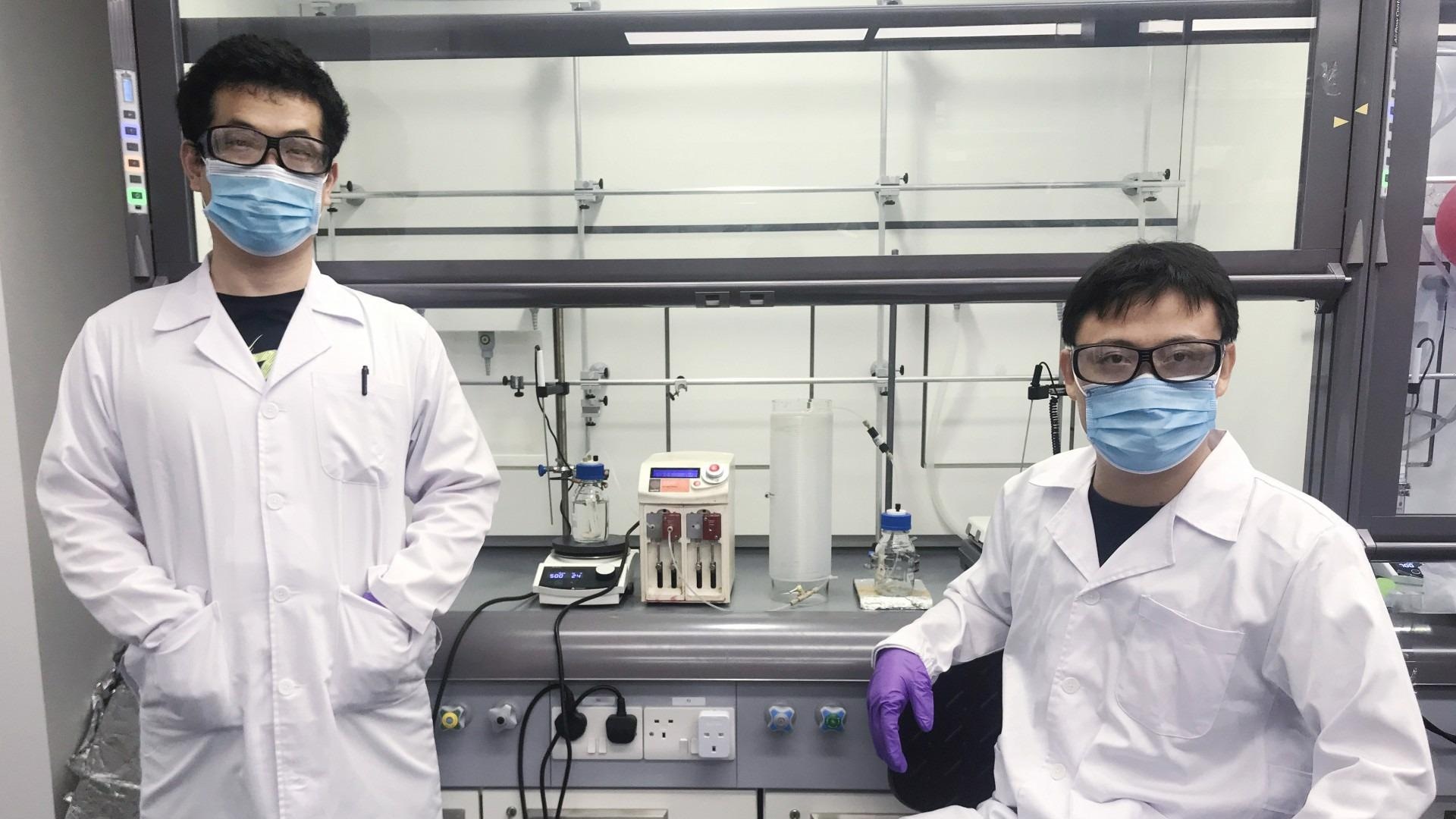Jun 1 2021
A huge investment of time, resources, and effort is required in the research and development of novel small-molecule compounds for therapeutic applications.
 Dr Liu Chenguang (left) and Assistant Professor Wu Jie (right) are part of the NUS team that developed the automated technique to produce pharmaceutical compounds. Image Credit: National University of Singapore.
Dr Liu Chenguang (left) and Assistant Professor Wu Jie (right) are part of the NUS team that developed the automated technique to produce pharmaceutical compounds. Image Credit: National University of Singapore.
Now, giving a new twist to the traditional chemical synthesis, a research team from the National University of Singapore (NUS) has identified a new method to automate the manufacturing of small molecules that are suitable for pharmaceutical use.
The new technique could be used for molecules that are generally manufactured through manual procedures, thus decreasing the required manpower.
The researchers, who achieved this technological innovation, were headed by Assistant Professor Wu Jie from the NUS Department of Chemistry and also by Associate Professor Saif A. Khan from the NUS Department of Chemical and Biomolecular Engineering.
Demonstrating the new method on a pharmaceutical molecule, called prexersatib, employed in cancer therapy, the NUS researchers successfully achieved a completely automated six-step synthesis with an isolated yield of 65% in less than 32 hours.
Moreover, the new method effectively generated 23 prexasertib derivatives in an automated manner, which demonstrated its potential for drug discovery and design. The results, which were initially published in the Nature Chemistry journal on April 19th, 2021, could be used for producing a broad range of pharmaceutical molecules.
Simplifying the Production of Pharmaceutical Compounds
New developments in end-to-end continuous-flow synthesis are quickly widening the potential of automated syntheses of small-molecule pharmaceutical compounds in flow reactors.
Besides this, there are manufacturing techniques that are well defined for several molecules, like oligonucleotides and peptides, which have repeating functional units. But it is not easy to perform multi-step continuous-flow synthesis of active pharmaceutical ingredients because of several problems, like reagent and solvent incompatibilities.
The novel automated method designed by NUS investigators integrates a couple of chemical synthesis methods. These include solid-supported synthesis, where molecules are chemically bonded and allowed to grow onto an insoluble support material, and continuous-flow synthesis, in which chemical reactions are performed in a streamlined procedure.
The new method, known as solid-phase synthesis-flow (SPS-flow), helps develop the target molecule on a solid supporting material as the reaction reagent passes via a packed-bed reactor. Computer automation controls the whole process.
When compared to prevailing automated methods, the SPS-flow technique allows broader reaction patterns as well as longer linear end-to-end automated production of pharmaceutical compounds.
The team tested the new method on prexasertib, a cancer-inhibiting molecule, because it can suitably adhere to the solid resin that was utilized as the support material. The researchers’ experiments demonstrated a 65% yield after 32 hours of constant automated execution.
This process is an improvement from the prevailing technique of creating prexasertib that more or less takes approximately a week and also needs an elaborate six-step manual procedure and a purification process to create up to 50% yield.
The latest technique also enables synthetic changes early in the process itself and thus allows greater structural diversification when compared to conventional techniques, which only enable late-stage diversification of the common core structure of a molecule.
With the help of a computer-based chemical recipe file, the researchers effectively created 23 derivative molecules of prexasertib. The resultant derivatives are molecules in which the parts of the molecular structure slightly differ from the actual molecule.
The capability to easily obtain these derivatives is crucial during the drug discovery and design process as understanding the relationship between molecule structures and their activities play an important role for the selection of promising clinical candidates.
Saif A. Khan, Associate Professor, Department of Chemical and Biomolecular Engineering, National University of Singapore
Creating New Possibilities in Drug Development
The NUS researchers have now planned to further demonstrate the versatility of their SPS-flow method by performing additional studies that integrate top-selling pharmaceutical molecules.
Our new technique presents a simple and compact platform for on-demand automated synthesis of a drug molecule and its derivatives. We estimate that 73 per cent of the top 200 bestselling small-molecule drugs could be produced using this technique.
Wu Jie, Associate Professor, Department of Chemistry, National University of Singapore
The researchers’ upcoming studies will focus on the development of a portable and completely automated system for the production of active pharmaceutical ingredients at a greater scale appropriate for manufacturing. This system will use the recently designed method in lead optimization to expedite the drug discovery process.
Journal Reference:
Liu, C., et al. (2021) Automated synthesis of prexasertib and derivatives enabled by continuous-flow solid-phase synthesis. Nature Chemistry. doi.org/10.1038/s41557-021-00662-w.